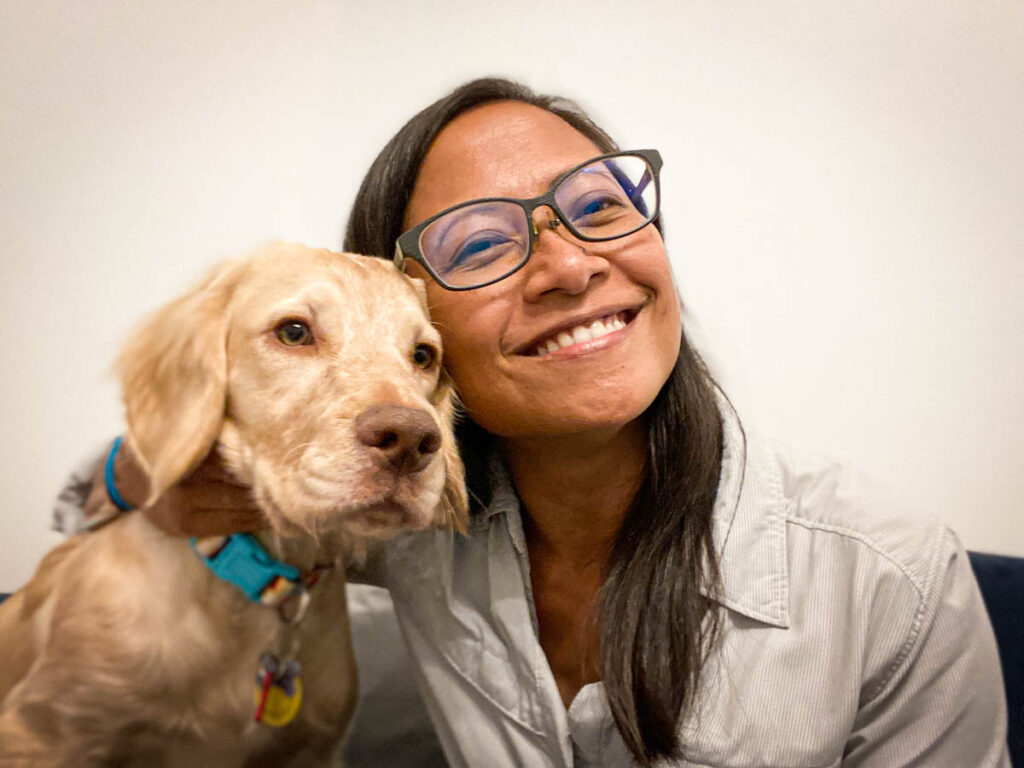Episode 11: Where can I do affordable worldschooling?

In this episode of Worldschooling Q&A, Astrid and Clint dive into a commonly asked worldschooling question: where in the world is worldschooling most affordable? Where can we do affordable worldschooling?
Worldschooling Q&A – Episode 11
Hosts: Astrid & Clint, creators of The Wandering Daughter
Title: Episode 11: Where in the World Is Worldschooling Most Affordable?
Episode Summary
In this episode of Worldschooling Q&A, Astrid and Clint tackle one of the most practical questions families ask: Where in the world is worldschooling most affordable?
Drawing on their experiences traveling full-time through more than 18 countries, we explore the regions and countries that offer the best balance between culture, comfort, and affordable worldschooling. The conversation also looks honestly at the ethical and economic layers behind what “affordable” really means, reminding families to stay mindful of local communities as they map out their travels.
The conversation touches on how privilege, exchange rates, and local economies intersect with travel budgets — and how families can make more conscious choices when planning their worldschooling adventures. From Southeast Asia’s family-friendly affordability to Latin America’s vibrant diversity, and even creative ways to make pricier destinations manageable, Astrid and Clint share both wisdom and practical insight for planning your next adventure.

Starting point regions for affordable worldschooling
The following regions offer families many possibilities for affordable worldschooling while also encouraging a deeper look at culture, community, and responsible travel. Each area comes with its own nuances, but they all give families an approachable place to begin.
Southeast Asia: a longtime favorite for families
When families think about affordable worldschooling, Southeast Asia often comes to mind. As a family, we’ve spent extended time in Indonesia and visited Vietnam and the Philippines, and we’ve seen firsthand how far your money can stretch.
Daily life can feel comfortable without straining your budget, especially when you are intentional about how you engage with local communities. This helps families prioritize meaningful learning rather than worrying about overspending.
Understanding exceptions and real costs
Even within Southeast Asia, affordable worldschooling is not universal. Singapore, for example, tends to be more expensive than its neighbors, partly due to its strong position as an international hub.
Still, families can practice affordable worldschooling there through free parks, low-cost public transportation, and thoughtful activity choices. During our episode, we remind families that affordability is relative to privilege. So families should remain mindful of how their presence affects local economies.
Latin America: a region with range
Latin America also provides many opportunities for affordable worldschooling. Countries like Mexico, Paraguay, or parts of Colombia offer a comfortable pace of life and access to hands-on learning for families.
At the same time, destinations like Costa Rica can feel pricey, especially if you’re coming directly from a more affordable part of the region. Tourist demand can increase local prices, so practicing affordable worldschooling in Latin America means choosing neighborhoods and communities that reflect everyday local life rather than the main visitor hubs.
How prices shift within regions and cities
Affordability often changes even within a single country, and families practicing affordable worldschooling quickly learn the value of looking beyond the center of a city or the most popular destinations. These nuances help families budget wisely and still prioritize meaningful learning.

Tourist hotspots and inflation
Tourist-heavy areas often cost more, even if the broader region is known for affordable worldschooling. In parts of Indonesia and Costa Rica, increased visitor demand can drive up prices, especially for food and accommodation. This means families may have to look at less popular towns or plan longer stays to access lower daily costs. It’s a reminder that affordable worldschooling works best when families stay flexible and open to different areas.
Neighborhood choices matter
From our experience, the neighborhoods you choose to stay can impact the affordability of a place. In Mexico City, for example, families can spend a lot in the downtown core, but smaller residential neighborhoods nearby offer much more manageable daily costs.
Smaller residential areas also tend to offer richer everyday experiences, which is ideal for affordable worldschooling. Grocery stores, markets, and community spaces often become part of a family’s learning rhythm, creating opportunities to engage with local culture more meaningfully.
Balancing value with experience
Some places are worth visiting even if they fall outside strict affordable worldschooling parameters. Costa Rica’s eco-tourism efforts or Singapore’s accessibility for first-time Asia travelers can still offer families powerful learning.
In these cases, affordable worldschooling may mean blending free experiences with strategic paid activities, or spending longer in less costly regions to offset a short stay in pricier ones.
Expanding the definition of affordable worldschooling
Europe often has a reputation for being expensive, but our experience has shown that families can still practice affordable worldschooling there. The key is to focus on specific regions, travel styles, and resourceful approaches that make learning from the world accessible.

Eastern Europe as an option
Eastern Europe can be a helpful entry point for families seeking affordable worldschooling. From other worldschooling families, we've heard that places like Romania and Albania have fairly manageable daily expenses can be, especially compared to the United States. Families traveling there can enjoy historic sites, nature, and cultural experiences without sacrificing their budget.
Finding pockets of affordability in Western Europe
Even Western Europe has areas that support affordable worldschooling. Spain, especially in southern regions like Andalucia or cities such as Malaga, felt more affordable than we expected. Grocery prices and restaurants fit within our typical budget, and spending longer in one place also helped. Slower travel often makes affordable worldschooling more sustainable because families can settle into routines that mirror daily local life.
Housesitting and home exchange as tools
Affordable worldschooling also comes from getting creative with lodging. Housesitting, for example, has allowed us to spend time in places like the UK without facing steep accommodation costs. Home exchange can work similarly. These approaches help families stay in regions that might otherwise feel out of reach. They also naturally immerse families in local communities, which aligns well with responsible travel values.
Submit your worldschooling questions here!
Episode guide
What “affordable” means in worldschooling
- Affordability is relative to each family’s budget
- U.S. dollar privilege affects travel experiences
- Ethical travel includes awareness of local economic realities
Regions where worldschooling can be more affordable
Southeast Asia
- Indonesia, Vietnam, Philippines mentioned
- Singapore as an exception due to higher costs
- Popular region for digital nomads and worldschooling families
Latin America
- Large regional diversity in costs
- Paraguay and parts of Mexico considered more budget friendly
- Costa Rica often more expensive due to tourism demand
Price differences within countries and cities
- Tourist hotspots tend to inflate prices
- Neighborhood choice affects daily spending
- Mexico City used as an example of varied affordability
Europe as a mixed-cost region
Eastern Europe
- Often cheaper than the U.S.
- Kosovo and Slovenia noted as examples
Western Europe
- Still possible to travel affordably
- Spain, especially Andalucia, felt manageable
- Scotland and England affordable outside major cities
Strategies for managing costs
- Slow travel helps reduce expenses
- Housesitting as a major cost-saver
- Home exchange as another accommodation option
Responsible and ethical considerations
- Making conscious choices to minimize impact.
- Recognizing traveler privilege
- Understanding that affordability to travelers isn’t universal

Chapters
00:00:00 – Introduction
00:01:01 – Today’s Question: Where in the world is worldschooling most affordable?
00:01:45 – Defining “affordable” and acknowledging privilege
00:02:35 – Ethical travel and responsible budgeting
00:03:13 – Southeast Asia: Value for money and popular family destinations
00:04:15 – Latin America: Diversity, affordability, and regional differences
00:06:45 – Costa Rica and tourist-driven inflation
00:08:07 – Europe: Comparing Eastern and Western affordability
00:10:23 – Creative ways to offset costs (house sitting & home exchange)
00:12:04 – Outro and how to connect with Astrid & Clint
Further worldschooling resources
- Affordable World Travel With Kids: 7 Useful Family Travel Budget Tips
- House Sitting With Kids: 15 Essential House Sitting Tips
- 6 Useful Sharing Economy Travel Tips for Families
- How To Use The Hipcamp App For Awesome Camping Options
- 6 Genius Ways We Save Money on US Family Travel
Support the podcast
- Join The Wandering Daughter on Patreon for episode transcripts, extra resources, and live office hours with Astrid and Clint.
- Follow and subscribe on Spotify, Apple Podcasts, and YouTube.
- Leave a five-star review to help others discover the podcast.
- Submit your worldschooling questions to our podcast page.





